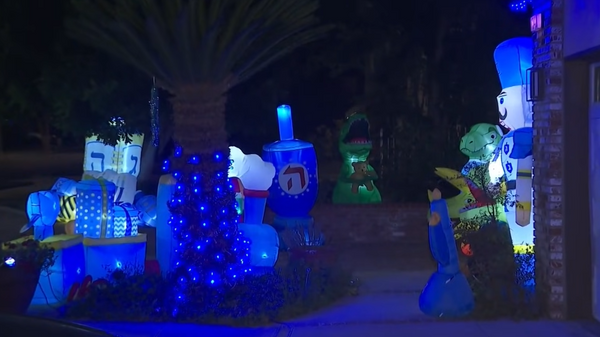
The sun is out, mercury is rising and keeping cool is on the minds of most people.
If you have solar panels, you might be wondering if the heatwave could hand you a tidy bonus in the way of more free electricity to use yourself – maybe to keep an air conditioner going, or at least a fan – or to sell back to the grid.
Longer days do mean more solar power since sunlight will be hitting your panels and generating power for more time.
The bad news is that high temperatures can actually lower your generation with solar panels. The good news is that it isn’t by much in Britain.
How do solar panels perform when it’s hot?
Modern solar panels will work from minus 40 degrees Celsius to 85 degrees, according to the trade body Solar Energy UK, and they generally work best at 25 degrees or below.
For each degree you go up from 25 degrees, you lose about 0.34-0.5 percentage points of power, depending on the quality of the cells.
That means at 40.3 degrees, Britain’s all-time record, set on 19 July 2022, good panels were operating at about 5 per cent below their best.
In direct sunlight, panels can get much hotter than air temperature, of course, but even at 85 degrees, they would only lose about 20 per cent of their power.
When temperatures did hit that record, the commercial solar sector performed well. Over the course of that day, solar provided 8.6 per cent of the UK’s electric power needs compared to 9 per cent for the previous seven days, suggesting only a small drop off.
Heatwaves in the UK are likely to become longer and hotter due to global heating, according to the Met Office.
Are solar panels worth it?
If you have space to install them, use electricity during the day, own your home, plan on staying there and are up for doing a little homework, then the answer is probably yes.
It can take up to 13 years to get a return on your solar panels, but this number can be slashed if you have a south-facing roof, live further south, use your savings to buy them rather than borrowing and paying interest, and use power during the day. Solar panels can also last for 30 years.
There are a lot of variables to account for. In the below table, we are using an address in London, assuming a family of three and typical use (no heat pumps, high daytime usage or electric car charging).
Other assumptions include no shade on the panels and that someone is in, using power for about half the day and an export price of 15 pence per kilowatt hour. Other than a new inverter, no other maintenance costs are assumed, and no financing costs are assumed. The roof is roughly south-east facing.
Much will depend on what price you get for your exported electricity. Tariffs vary widely. If you keep on top of things, however, you should be able to get the 15p per kilowatt hour we use below.
Household size |
System size in kw |
Array cost |
Electricity cost per year before solar |
Savings (energy used and sold from panels) |
Price after solar (negative means a surplus) |
Pays for itself after |
3-bed |
3.6kw |
£4,990 |
2,900 kWh @24.5 pence = £710 |
£540 |
£170 |
9 years |
4-bed |
5.4kw |
£5,470 |
2,900 kWh @24.5 pence = £710 |
£780 |
-£70 |
7 years |
5-bed+ |
9.9kw |
£7,390 |
2,900 kWh @24.5 pence = £710 |
£1,370 |
-£660 |
5 years |







